In the last 125 years, the tram service between Rákóczi Road and Erzsébet Bridge has not been without problems, this section has seen many disputes. A tram has been running on Rákóczi Road since 1897, but despite the fact that the Erzsébet Bridge with the tram tracks was handed over in 1903, it still took 11 years for the first tram to roll here from Pest to Buda. The reason for the delay was the dispute between the two tram companies, BKVT and BVVV, with the capital. They managed to come to an agreement with great difficulty, which also required the city leaders to look for alternative transport solutions for the time that the Chain Bridge was being rebuilt.
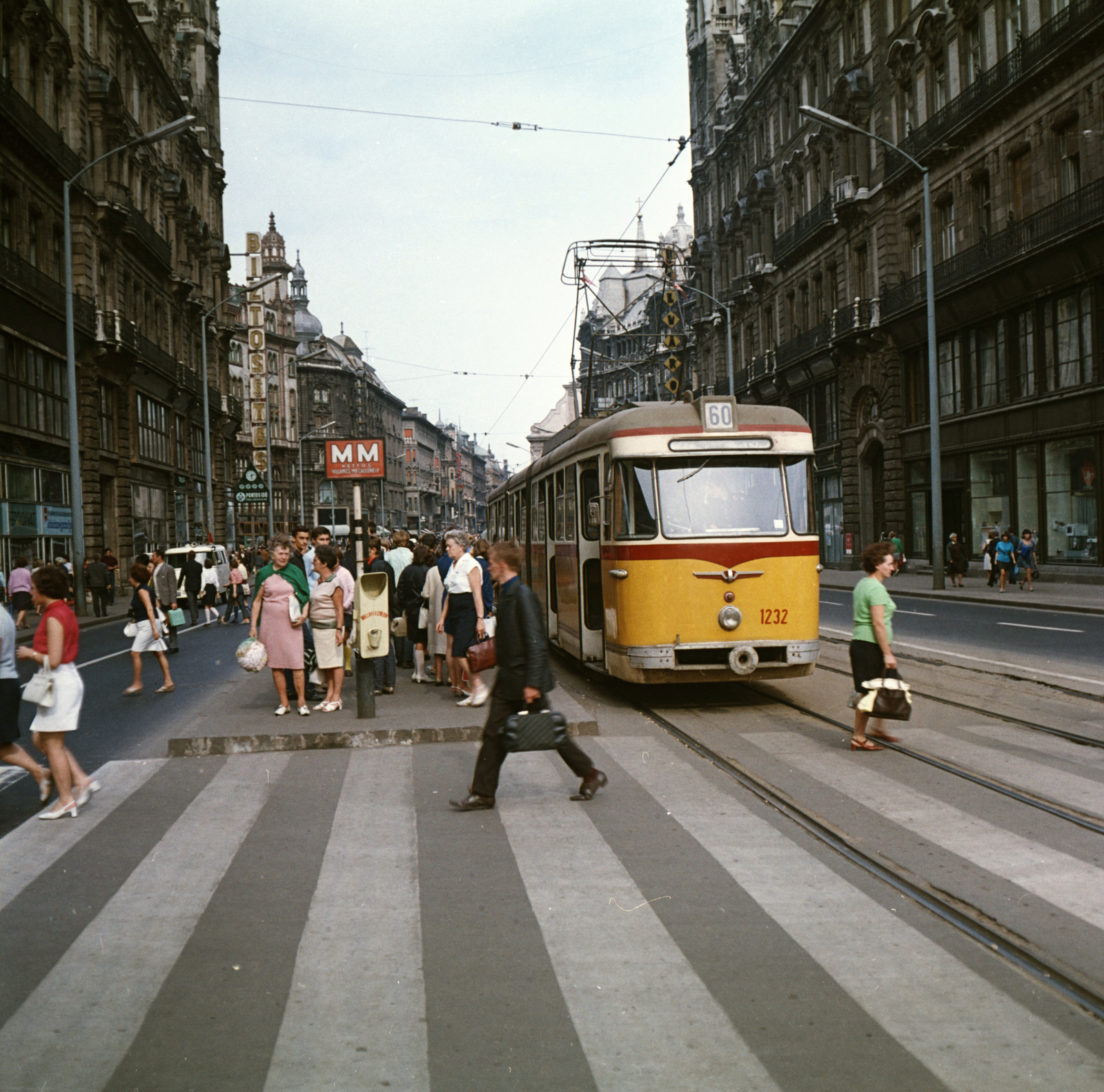
Tram stop at Ferenciek Square in 1969 (Photo: Fortepan/Főmterv)
After that, the trams continued to operate until the end of World War II. The Erzsébet Bridge was blown up by the German troops on 18 January 1945, and for nearly 20 years after that, there was no crossing where a tram could travel. The trams ran to the temporary terminus on Március 15 Square, where they turned back, but everyone missed the bridge and, of course, the tram service on it.
The new cable-stayed bridge was also built with a tramway, and one of the first vehicles that rolled over it after the handover, in 1964, was a Bengali-type tram, which is clearly visible in the photographs of the time. In Pest, traffic was served by the island platform at the head of the bridge and its own set of stairs leading under the bridge, and even the pavement islands of the Rákóczi Road tram had their own stairs from the Astoria underpass.
In addition, there was very heavy tram traffic on Rákóczi Road, a total of five tram lines passed through the Erzsébet Bridge. Tram 44 ran between Zugló and Moszkva (now Széll Kálmán) Square, the 67 went from the Rákospalota MÁV station to Szarvas Square, the 60 from the Keleti Railway Station also arrived here, the 68 connected the Örs Vezér Square with the Móricz Zsigmond Square, while the 19 ran between the Keleti and Kelenföld railway stations.
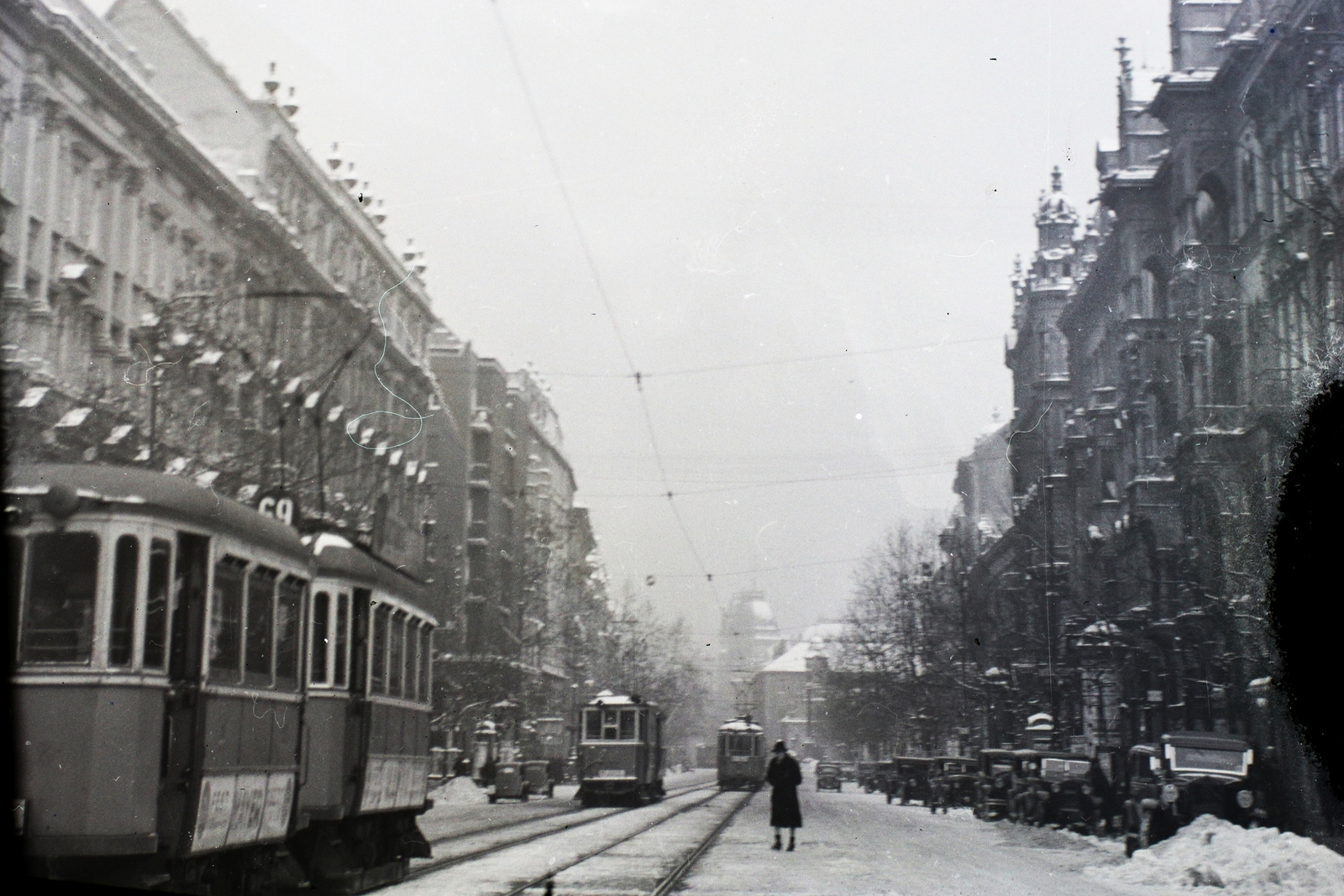
Trams on Rákóczi Road in the winter of 1940 (Photo: Fortepan/No.: 94347)
In fact, the tram on the new Erzsébet Bridge was a forced solution in the eyes of the city administration at the time, they did not even consider it originally, Budapest's traffic plans were much more grandiose. At that time, on the one hand, the metro was considered the most important means of public transportation, the backbone of east-west traffic, and on the other hand, Rákóczi Road was intended to play a more significant role in national road traffic, as the east-west national axis of traffic, where cars quickly pass through. On the other hand, they wanted to strengthen accessibility by car throughout Budapest, and they wanted to give cars as much space as possible. This is why the Erzsébet Bridge was built much wider than before, and this is why the houses on Rákóczi Road started to be arcaded, so that there would be enough space, 2x3 lanes for cars. It was also planned that the Rákóczi Road would be routed over the overpass at Astoria, while the Outer Ring Road would be diverted to the underpass at Blaha Lujza Square.
The tram did not fit into this urban expressway concept, experts calculated that if the subway opens, the Rákóczi Road tram line will simply be unused, and therefore not worth maintaining. However, the subway was delayed, so the transport organisers were forced to route the tram over the new bridge, but it was not planned for the long term. On the bridge, due to the planned short use, they did not build a suitable foundation for the trams, the rails were bolted directly to the structure, which in turn had harmful consequences, as the vibrations caused by the trams were transmitted to the structure. Although only trains with better suspension than average were allowed to go on it, the bridge still developed micro-cracks, which made tram transport unsustainable in this form.
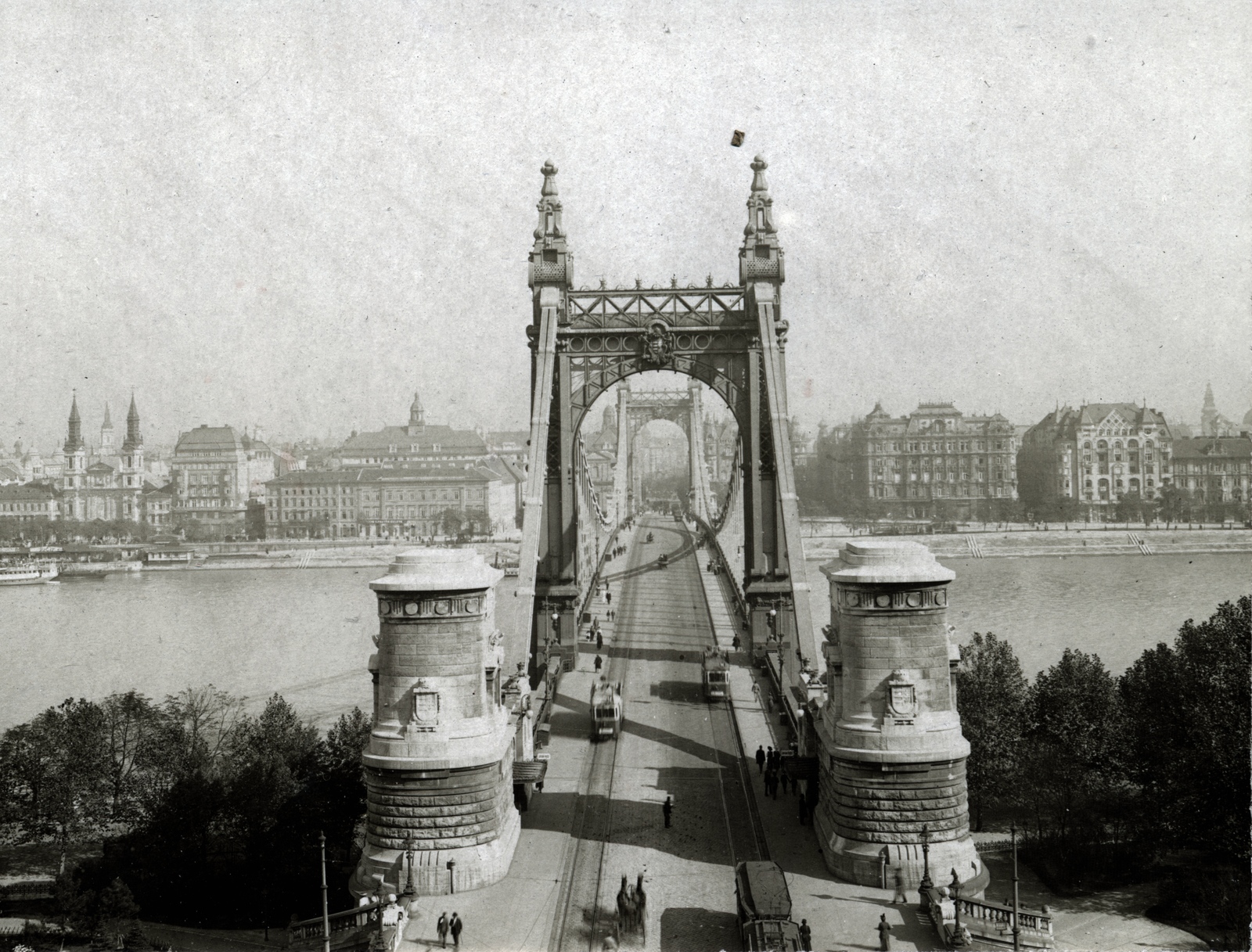
Trams on the old Erzsébet Bridge (Photo: Fortepan/No.: 151697)
However, on 22 December 1972, everything changed. The east-west subway was handed over on this day, and the Rákóczi Street tram was immediately closed. Tram 60 had already been discontinued, the 44 and 67 did not run on Rákóczi Road from 22 December, and the 68 and 19 were continued only until the end of the year.
On 31 December 1972, the last tram rolled across Rákóczi Road and Erzsébet Bridge to Móricz Zsigmond Square, its drivers were socialist brigade leader Jenő Albert and János Czibik, Czibik was about to retire after 30 years of tram driving. As soon as this tram 68 left, they started to dismantle the tram tracks almost immediately.
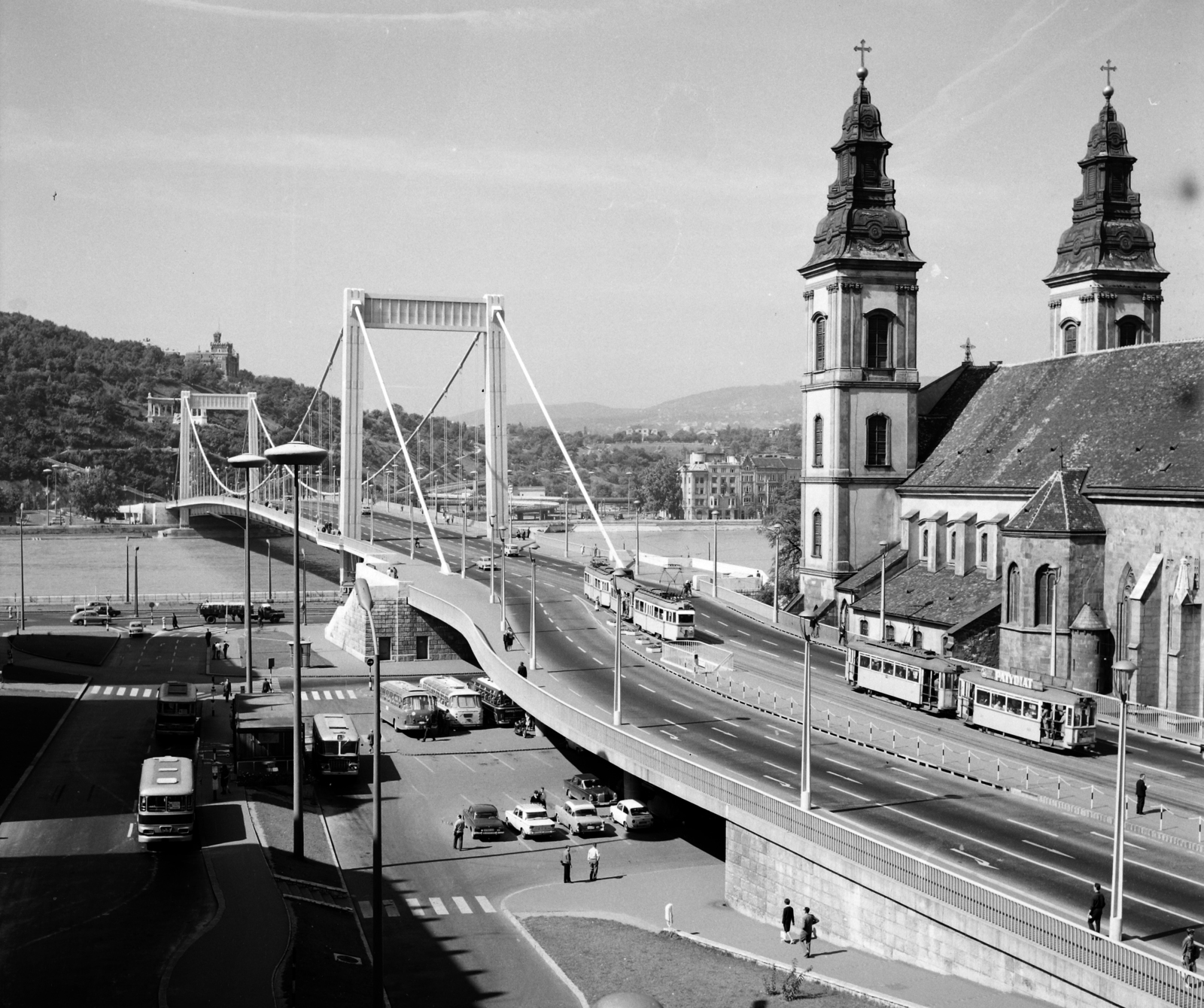
There is hardly a trace left of the once-busy tram line (Photo: Fortepan/Uvaterv)
Of course, the discontinuation of tram transport was not without precedent, many reports and articles were published about it, and there were even voices in the press that somewhat disputed the necessity of this measure. Klára Fehér listed the consequences of the future lack of trams in a long article in the issue of Élet és Irodalom on 4 November 1972, among other things she wrote:
"The metro only solves the traffic problems of those who happen to want to travel a long distance quickly on that exact line. But - and this is also stated in the official announcement - "it adversely affects twenty-three per cent of the passengers." A lot of people will travel long distances unnecessarily to get to the same place, where they got there quickly and easily by tram passing through Rákóczi Road, Kossuth Lajos Street, and Erzsébet Bridge."
The official position was conveyed by the newspaper Népszabadság, when on 31 December 1972 it wrote:
"Everything can and should be discussed. However, one cannot doubt the correctness of the basic principle that placed the development of public transport in Budapest first. Parallel to the construction of the metro, the trams will also disappear from Üllői Road, Bajcsy-Zsilinszky Road and Váci Road. And it is right that they disappear if we already have a more modern means of public transport in their place and if this measure generally helps the rapidly growing traffic of a big city to be handled more easily."
So the tram stopped working, the stairs were removed in the underpasses as well as in the Pest end of the Erzsébet Bridge (the trace of patching is still visible from below in the reinforced concrete), and in principle, the beautiful new world could have arrived. What seemed modern in the eyes of the city administration in 1972, somewhat backfired. Rákóczi Road actually never had three lanes for motor vehicle traffic, since a bus lane was created on the road when the trams were discontinued, i.e., there were only two lanes left for normal car traffic. Although the separate level junctions were not built at Astoria and Blaha Lujza Square, Rákóczi Road became an inner city highway instead of a cosy main city road.
In recent years, more and more civil and professional organizations have suggested that the tram should be returned to Rákóczi Road. The tram did not disappear, it did not become an old-fashioned means of transport, it is still one of the most important vehicles of urban public transport, which is being vigorously developed worldwide.
Cover photo: Tram stop at the Astoria intersection, the opposite is Kossuth Lajos Street, on the right, on the corner of Rákóczi Road – Károly (Tanács) Boulevard is the HAS apartment building in 1971 (Photo: Fortepan/No.: 252937)

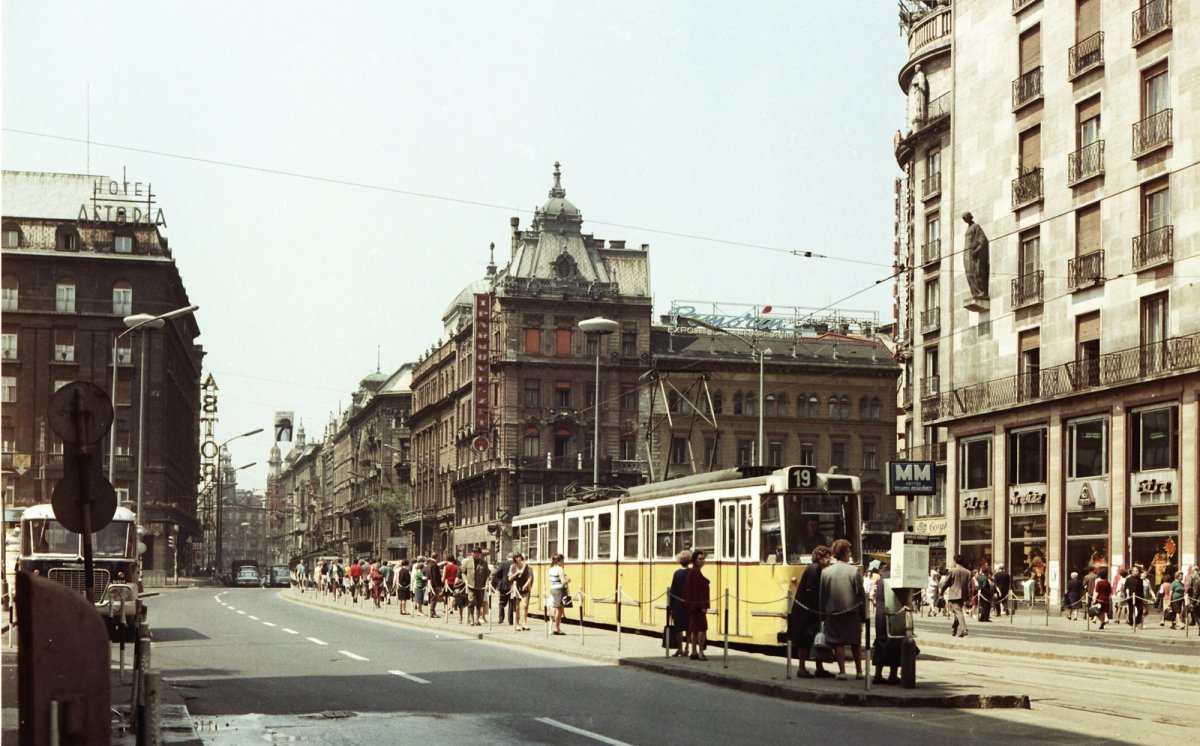


































Hozzászólások
Log in or register to comment!
Login Registration